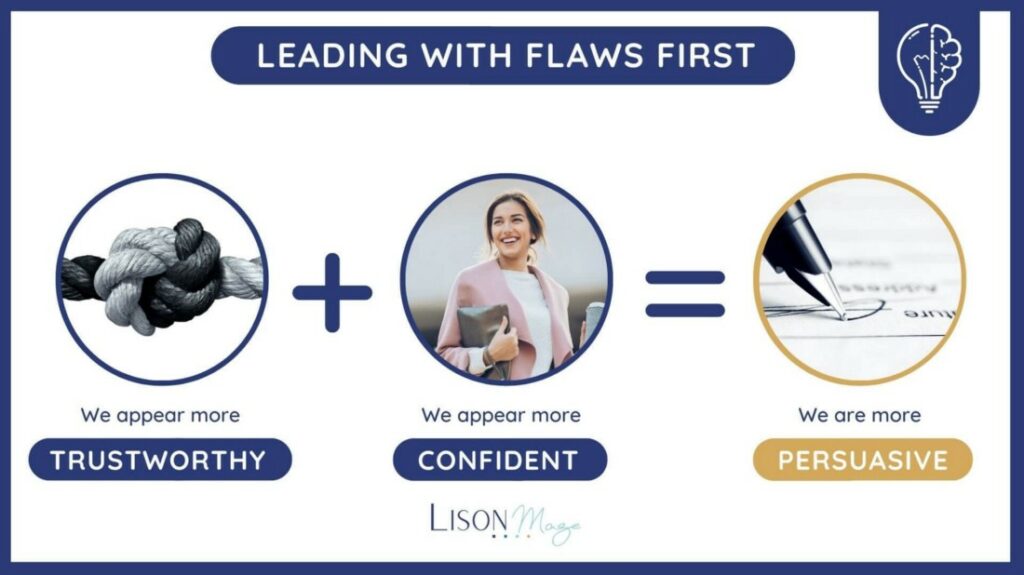Many of us had to do an important presentation in front of a selective audience. For instance, to introduce a new product to management, report on project progress to customers or pitch a new idea to investors.
And when we face this situation, where the stakes are high, we want to put our best selves out there.
The reason is simple.
We want to convince our interlocutors that they should endorse this new product, that the project is on time and on budget, or that they must back up our ground-breaking concept.
So, we work tirelessly to craft a sleek slide deck and a punchy speech, highlighting all the merits and positive points.
But if you face a sceptical public, you should also include the flaws of your product, the issues of your project and the shortcomings of your idea. And according to psychologist and professor Adam Grant, you should even present these first.
Why? Is it shooting yourself in the foot?
Several studies show that this technique offers several benefits and is an essential element of leadership.

If we are genuine, not sneakily introducing a strength as a weakness (like we are told to do in job interviews with the famous “I’m a perfectionist”), we appear authentic. When we open up about the areas where we stumble, we appear more trustworthy when showing our vulnerabilities.
Our counterparts realise we are not hiding things, shifting their focus from finding what is wrong or not working to solving the issues at hand. It moves them from a confrontational to a collaborative approach.
Moreover, when we show ownership of our flaws, we appear more confident (even if we feel we aren’t). It demonstrates real awareness and builds the conviction that we are on top of the situation, no matter its difficulty.
Ultimately, our presentation is reinforced and we are more persuasive.
My Last Finding
Chris Voss, author of Never Split The Difference and former FBI hostage negotiator, explains that there are also two other benefits of presenting your flaws first.
Firstly, you are turning some bullets to blank.
As you present issues, you are preemptively addressing remarks, figuratively disarming your interlocutors. It doesn’t make the problems disappear, far from it, but it reduces their perceived impacts as you know about them (and possibly have contingent plans to address them).
Secondly, you are removing some bullets from the barrel.
When you are forthcoming about your difficulties, you set up the context and prime your audience. That means that what you describe becomes “all there is”. If you listed three issues, most people will only focus on these three and cannot come up with other ones.
My Special Sharing
As a personal example of how to introduce your flaws in a presentation, I begin most of my corporate workshops by stating that I’m not an English-native speaker and have a strong French accent.
I know that it can disturb some attendees and that — at times — they might struggle to understand me.
So I do not shy away from it and I address it upfront, stating that they should ask me to repeat. I can also joke about my Frenchness and state that it will force them to stay focused if they want to get everything.
I embrace my accent, which somehow contributes to my uniqueness.
And to ensure it is not a barrier to connecting, I also like to bond with my audience. So for Australia-based workshops, I will share that I acquired my Australian citizenship a bit more than a year ago and how proud and grateful I am for this achievement.
With these two elements, I know we are always up for a fantastic start.
To you success,
Lison
N.B: My first book Act Before You overThink is out! With it, you will learn how to make better decisions faster and liberate your mind from the constant chatter that hinder your potential. You can buy it here => Purchase Link


Responses